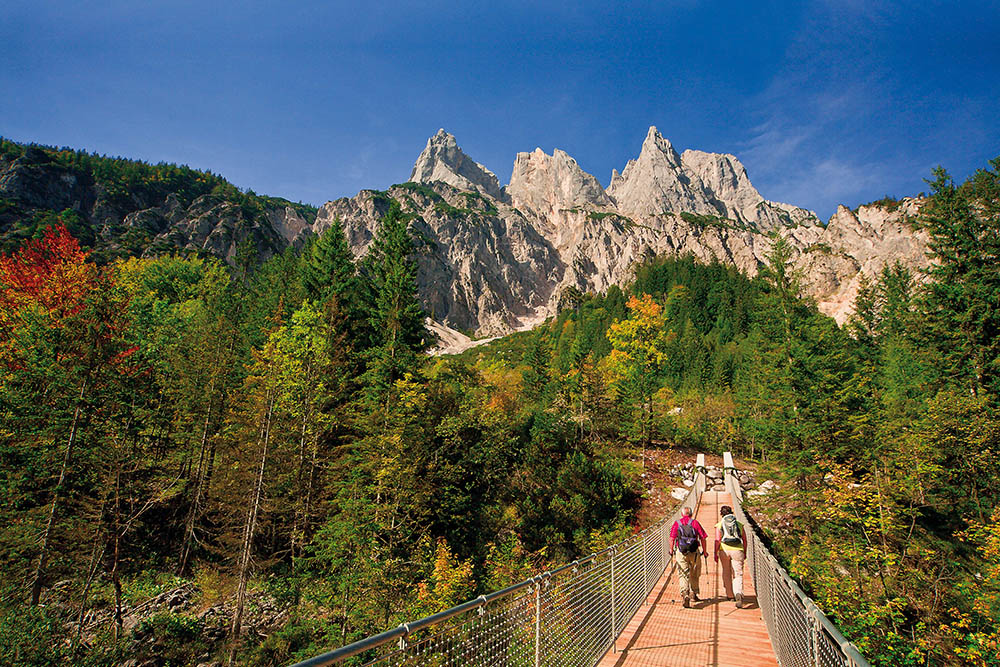Suspension bridge over the Klausbach

Quiet location »my ass«!
Everything is in motion. Every little stone that the Klausbach stream moves downstream is a tiny part of a permanent process of change that is underway throughout the Alps. Erosion, heavy rainfall, rockfalls and ice blasting permanently change our mountains.
One night in September 1999, with a loud roar, around 250,000 m³ of rock broke off from the Kleiner Mühlsturzhorn in the summit area and fell into the valley. A huge cloud of dust settled on the trees and gave the valley an almost wintry appearance. The then wooden bridge over the Klausbach, the road and parts of the path were buried under tons of debris and the Klausbach was also forced to dig a river bed through the rock masses. The effects of the huge rockfall on the vegetation and the structure of the valley can still be seen today.
The new suspension bridge has been in place at this location since 2010. With a length of almost 55 meters and a height of a good 11 meters, it spans the watercourse and connects the two banks. The new bridge has already survived several minor rockfalls undamaged.
Did you know?
The suspension bridge over the Klausbach is accessible barrier-free, just before the bridge is a short, steeper piece to overcome. The AlmErlebnisBus stops directly at the suspension bridge during the summer months!